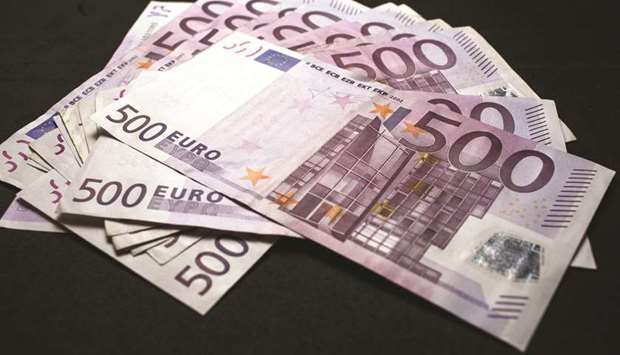Euro bulls may need to look beyond central bank’s guidance for support

Bloomberg/Athens
Mario Draghi may disappoint investors who are looking for the euro to go higher. Instead, he may do another balancing act at his press conference on Thursday when presenting new growth and inflation projections that could show the impact of trade wars on the euro-area recovery.
Soft German factory orders suggest escalating global trade tensions are beginning to be felt, and without any fresh economic catalyst, the euro may again struggle on a rally toward $1.1750 resistance.
Option pricing suggests Draghi will keep forward guidance largely unchanged on September 13 and provide little, if any, reasoning for traders to add fresh upside exposure in the common currency. Slowing asset purchases that will eventually conclude this year is a notion already priced in as euro-dollar orbits the $1.16 handle.
Economists forecast Draghi will increase the deposit rate by September next year, to minus 0.2% from minus 0.4%, earlier than current market pricing, according to a Bloomberg survey.
The cost to hedge against price swings in the spot market remains close to its year-to-date average and way below the levels seen before previous ECB meetings. Expectations that the euro may see a large move stay near their recent lows, as shown by the so-called butterfly ratio, which shows the demand for options that gain from outsized moves.
The euro’s short squeeze since mid-August has resulted in a much more balanced positioning in the short to medium term.
The currency’s inability to rise above resistance formed by a series of summer highs at $1.1740-$1.1750 suggests investors aren’t ready yet to chase the market higher and turn this relief rally to a fresh bullish trend. Draghi is unlikely to provide ammunition for such a move higher and the dollar may stay in mean reversion mode. That may see the euro drop below the 21-daily moving average, currently at $1.1552, which served as strong support recently. Downside risks to economic growth and uncertainty still surrounding the Italian budget may keep the euro on a pattern that has seen it dropping on the day of the past seven ECB decisions.